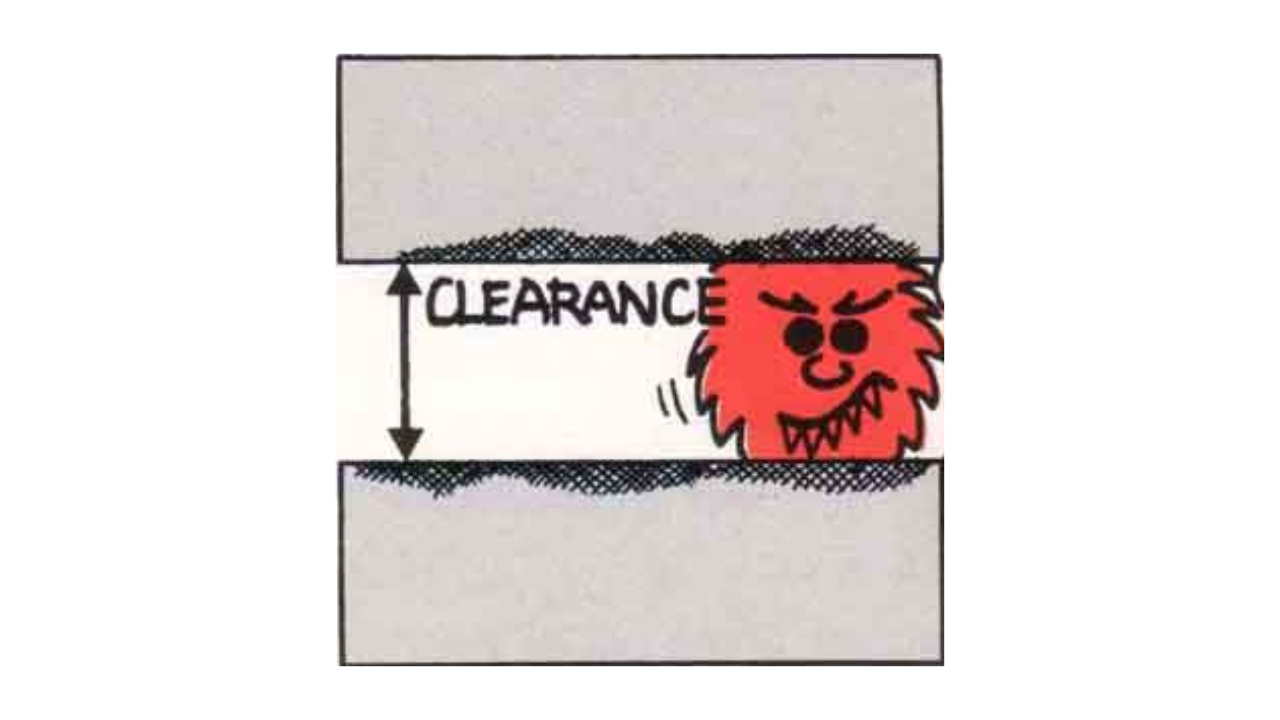Developing a Root Cause Analysis Work Process – Part 2
Rick Kalinauskas
Click to view each part of this series: 1 : 2 : 3
Understanding why RCA Programs Lack Formal Work Processes
As we can see, we cannot expect consistent performance and results from RCA activities, and avoid conflicts in organizations if we have not developed work processes. Why has RCA lacked the organizational emphasis on the development of formal work processes that will insure consistent results and eliminate organizational conflict?
One of the basic reasons for this is that the definition of Root Cause Analysis itself is not widely agreed upon. There is a great deal of confusion regarding RCA and how it is applied. The many products available that provide structured problem solving models and training in how to use them compound this. These products are excellent tools, but they are not what constitute RCA.
From my own RCA experiences at industrial sites and manufacturing facilities, I have found that there is little consensus regarding what constitutes an Root Cause Analysis activity, what it is supposed to accomplish, how it will be applied, who should do the activity, when it will be applied, etc. Very little agreement exists on these basic RCA points. Ask these RCA questions in your work environment and listen to the diversity of opinions you will hear in reply.
In most cases, it is seen as an activity used when failure events occur. Some organizations have assigned specific values, or “trigger” points in business measures that prompt RCA, and have defined responsibilities for analysis activities, documentation and corrective action. Along with this, training has been given to employees to teach them how to conduct fundamental analyses.
These efforts are effective for understanding the causes of events, but typically do not focus on using RCA as a means of addressing chronic failure events and trends. To maximize the return on investment for analysis time, RCA needs to be viewed as a continuous improvement work process that is focused on eliminating chronic loss areas and failure events. The goal of Root Cause Analysis should be improved business capability and process performance.
Most organizations are unaware of how RCA can be applied strategically in this manner, and how to develop work processes to support these activities. In addition, strong work cultures discourage individuals from pursuing strategic, data driven RCA activities.
As a result of these barriers, very few facilities have been successful in developing an effective RCA work process, in spite of their training investments.
Work Processes and Culture
The business of reliability improvement has a strong emphasis on technology and tools. Developing work processes and patterns of behavior are not prevailing topics of discussion among reliability professionals. While many refer to cultural change in reliability improvement as a means of gaining acceptance for new activities and work processes, there are very few definitions and blueprints for how to make this happen in an organization. Awareness of this is increasing.
Bob Williamson wrote that organizations should “Focus on results and change culture along the way.” His excellent point supports an important work process development need.
To ensure success, the first step in developing a work process in an organization is to define what business level objectives it wants RCA to accomplish.
Establishing challenging objectives is also an excellent way to encourage behaviors (work cultures) in an organization. Examples of this are seen in facilities faced with plant closure that have set very challenging goals and achieve significantly higher levels of plant performance as a result. When objectives are defined and emphasized, and employees are given the training and resources to carry out activities, results are seen.
The objectives for RCA should be strategic in nature and reflect key opportunities for the business to improve performance. To insure that these objectives are strategic, trend data from historical performance categories should be used to define opportunities. Some examples of objectives for RCA are listed:
- Reductions in unplanned downtime in processes
- Reductions in defective or off grade product
- Reductions in maintenance costs due to failures
- Elimination of repetitive equipment failure events
- Increased plant capacity or reduced cycle time
- Avoidance of repeat regulatory citations
Once objectives have been developed, the organization has a clear vision of what it is looking to accomplish.
In my experience, most organizations tend to avoid doing this improvement objective setting activity mostly because they lack confidence in their abilities to bring about the improvements to meet these goals. This is where a thorough understanding of the potential of strategic Root Cause Analysis can be very valuable.
Roles and Responsibilities for Root Cause Analysis
Once objectives for RCA have been established, the roles and responsibilities for the activities need to be defined. As in any work process, clear responsibility and accountability need to be assigned to individuals to insure that RCA tasks are planned and carried out. This step is a critical success factor for RCA work processes.
Most organizations do not recognize the potential payback of dedicating one or more resources to RCA activity on a consistent, or, if possible, a full-time basis. A full-time RCA resource, in most large industrial facilities, if utilized correctly, should more than pay for itself by reducing the costs of failures. In many cases, the saving-s in failure avoidance as an outcome of one successful RCA will usually more than cover the annual cost of the position. We have seen countless examples of this in our RCA experiences.
Consider this: The annual payroll cost for most organizations is significant, and includes funding for a majority of activities that do not focus on improvement. There are many support positions in staff, information technology, engineering and quality departments. These positions support the organization in a manner mostly dedicated to insuring defect-free production continuity. Based on the potential for improvement listed in our strategic objective categories, wouldn’t there be a clear justification for a dedicated RCA support role focused primarily on eliminating failures and reducing costs? Yet, it is rarely seen in manufacturing organizations.
To achieve our strategic objectives, RCA activities must be viewed as mostly independent of other tactical organizational efforts. We say mostly because there will always be a degree of overlap with other activities, but for the most part, RCA activities for improvement need to be organizationally focused on defined priorities.
In my experience, this staffing concept is considered too radical and unconventional for most managers to accept. Over the past 25 years I have had many discussions with managers who clearly accepted the principle of strategic level improvement activities but would not dedicate the required resources to carry out the tasks needed to support them. In my view, this has been the most significant of all the major barriers to developing RCA work processes in organizations.
From my experience working with organizations in developing these RCA work processes, most managers tend to reject the focused and dedicated RCA approach, based on their belief that all resources are needed to help carry out the daily or short-term priorities of the organization. In most cases, RCA responsibilities are proposed to be included in the job descriptions of existing positions, typically in maintenance groups.
This approach to assigning responsibilities usually fails to provide the time and focus needed to pursue the improvement objectives of strategic RCA. The conflict of urgent versus important usually causes individuals to defer RCA tasks in favor of the ever present tactical workload and unplanned priorities of their position. This is a very common situation where responsibilities for RCA are given to members of maintenance groups.
Many corporations view this maintenance-led approach as the optimum organizational model for implementing RCA as part of their overall reliability program. This policy can create significant problems for an RCA work process if some important considerations are not given.
From our experience, this organizational model requires an enlightened leadership and a disciplined approach in prioritizing activities to be successful. If these criteria are met, it is possible to have an effective RCA work process within an existing maintenance organization.
There are examples of RCA resources assigned within existing maintenance organizations having successes in eliminating chronic failure causes and reducing costs. In these cases, the leadership recognized the value of focusing resources on prioritized objectives, and allowed time for activities dedicated to RCA tasks.
Our experience has shown that the most effective organizational model for strategic RCA roles and responsibilities involves the creation of a dedicated resource or group, reporting to an appropriate level of management. This insures that the improvement agenda for the group will be supported and reinforced. In smaller facilities, an individual can fulfill this role.
A recent development has been the move towards using a contract RCA specialist with extensive training and experience for RCA work process development roles. In addition to RCA duties, this specialist provides mentoring and direction for the organization’s own resources who are new to RCA activities and tasks. This approach insures that RCA resources are given support and guidance during all of the developmental phases of the work processes, and develop confidence in their abilities to perform RCA responsibilities. The contract specialist role is phased out as competencies are developed and RCA is established in the facility.
Most important is the need to maintain alignment with the goals and objectives for strategic improvement, and avoiding frequent changes in priorities due to tactical activities. This is not to say that these resources should not be available for others in times of critical need. The point is that this need should not be a frequent request. Providing the proper goal and role definitions for RCA will insure that individuals assigned to RCA work processes have the time and resources to function effectively, and can do so without organizational conflict regarding their primary responsibilities.
Root Cause Analysis Training & Consulting Sponsor
Click to view each part of this series: 1 : 2 : 3
Rick Kalinauskas, CMRP, is President of Reliability Support Services, an educational consulting firm focused on helping organizations develop their Root Cause Analysis capabilities for achieving cost reductions and strategic improvements. He is an ardent proponent of RCA application and is a specialist in performing Root Cause Analysis for clients in manufacturing and industry.
Rick has over 20 years experience in the application of structured problem solving methodologies as part of his 30 years of involvement in manufacturing. He has a particular focus on the behavioral and work process aspects of reliability improvement. Rick has served in several maintenance and operations management roles with Nestle USA, as reliability engineering manager for International Paper, as an Asset Care Program Manager for Coors Brewing Co., and as a corporate reliability specialist in Root Cause Analysis for Halliburton KBR. He has worked with several clients in the oil and gas and pharmaceutical industries as well.
Rick resides in Chesapeake, Virginia with his wife Mary. He can be contacted at 757-646-4128 or email: [email protected]
Related Articles
Analyzing Semiconductor Failure

Improvement: What Comes First?

An Integrated Process for System Maintenance, Fault Diagnosis and Support

Anatomy of a Boiler Failure—A Different Perspective

Anatomy of a Hydraulic Pump Failure

Are We Willing to Hear What “Failure” Has to Say?




